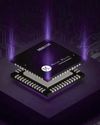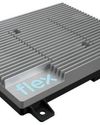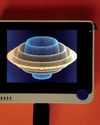
In the last of seven installments about the ubiquitous wireless protocol, Robert explores the bug corrections and new features through Bluetooth Versions 6.0. Previously he wrote about secure connections and he started the series in April 2024 with a review of the low energy protocol.
Welcome back to the world of Bluetooth. In my last six articles in Circuit Cellar, published since April 2024, I presented the overall Bluetooth Low Energy (BLE) protocol. In the first article of the series ("No Blues with Bluetooth. Part 1: An Introduction." Circuit Cellar 405, April, 2024) [1], I told you the history of Bluetooth and explained that no less than 14 Bluetooth versions have been introduced since 1999 (Figure 1). In particular, BLE was a new feature of Bluetooth 4.0.
Last month, I talked about Bluetooth 4.2 and its "Secured Connection" feature, which greatly improves the security of BLE. But what are the major features of the other Bluetooth versions? That's a nice subject to close this series, isn't it? So take a seat, and discover Bluetooth 5.0, 5.1, 5.2, 5.3, 5.4, and last but not least, the newly announced Bluetooth 6.0 (introduced in September, 2024.)
OPTIONS
Before digging into these new versions, I must remind you of a fundamental thing about Bluetooth. Each new version basically provides two things: bug corrections and new features. Bug corrections must be supported to state a compliance with a new version, but new features are always optional (at least since Bluetooth 2.0). In other words, the designer can decide whether or not to support each of the new features.
To be 100 percent clear, it is indeed possible to sell a Bluetooth 6.0 qualified device with absolutely no new features, compared to a Bluetooth 4.0 device, for example. You may argue that a customer would expect to get the newly announced features when buying a new version, but that's not necessarily the case.
هذه القصة مأخوذة من طبعة December 2024 من Circuit Cellar.
ابدأ النسخة التجريبية المجانية من Magzter GOLD لمدة 7 أيام للوصول إلى آلاف القصص المتميزة المنسقة وأكثر من 9,000 مجلة وصحيفة.
بالفعل مشترك ? تسجيل الدخول
هذه القصة مأخوذة من طبعة December 2024 من Circuit Cellar.
ابدأ النسخة التجريبية المجانية من Magzter GOLD لمدة 7 أيام للوصول إلى آلاف القصص المتميزة المنسقة وأكثر من 9,000 مجلة وصحيفة.
بالفعل مشترك? تسجيل الدخول

Morse Micro Launches Highly Anticipated Second-Generation MM8108 SoC
Enabling improved spectrum efficiency to minimize interference in high-density environments, the MM8108 delivers class-leading data rates of up to 43.33Mbps using world-first sub-GHz 256-QAM modulation at an 8MHz bandwidth, making it ideal for a range of applications in agricultural, mining, industrial, home, and city environments.

NXP MCX MCUs and IDEs Cut Development Time
Development boards, such as NXP's FRDM platform for MCX A series MCUs, are revolutionizing embedded systems by integrating components for prototyping and innovation in the IoT landscape. These technologies streamline development, enhance flexibility, and reduce costs, enabling greater focus on software development while addressing complex challenges.

Asynchronous Programming in Flutter - Shallow Dive into Google's Mobile App Framework
This month, Bob continues his look at mobile app programming from the perspective of an embedded system designer. He begins a shallow dive into Flutter, the mobile app framework from Google, by describing his transition from React Native to asynchronous programming in Flutter.

Basic Pulse Circuits - Part 3: Metastability, Setting, or Resetting
In digital design, signal processing is crucial when dealing with asynchronous signals from sensors and level translators. In Part 1 of a three-part series, Wolfgang described how pulse circuits help digital circuits deal with pulse trains. In Part 2, he wrote about flip-flops, timing parameters and synchronization. In Part 3, he looks at how to mitigate metastability and ensure internal clock synchronization.

Infineon and Flex Showcase Zone Controller Design Platform for Software-Defined Vehicles
Infineon Technologies AG and Flex, a diversified global manufacturer and new preferred automotive design partner for Infineon, are showcasing the new Flex Modular Zone Controller design platform for software-defined vehicles at CES 2025.

Switching Regulator Efficiency - Minimize Power Consumption in Battery-Operated Systems
A switching voltage regulator converts input DC voltage into a desired output DC voltage. This month, Stuart delves into the factors that influence the efficiency of switching regulators, and why they are crucial for embedded applications. From understanding the role of inductors and transistors to exploring practical examples, this article offers valuable knowledge for anyone interested in optimizing power supply designs.

Learn Lisp Programming Using MCUs - Part 2: Extending µLisp with Custom Functions
In the second installment of this series, Raul delves into the world of µLisp and shows how to extend capabilities by adding custom functions such as \"pulsein\" and \"servo-create\", enabling developers to interface with ultrasonic sensors and control servomotors. In Part 1, Raul presented µLisp concepts and syntax, and extensions specific to MCUs.

Introducing Bluetooth LE Audio - Part 1: Sound of a Revolution
Following the Bluetooth Core 5.2 release, Bluetooth Low Energy Audio introduces capabilities that will revolutionize audio applications through isochronous channels and new audio middleware. Nick writes about a framework supporting bidirectional audio and shared listening in Part 1 of a two-part article.

CMake the Most of Software Development - Modern Build Systems Support Scalability
Discover how modernizing your build system with CMake can revolutionize embedded software development, offering unparalleled flexibility and efficiency. Dive into this article to explore the transformative benefits of CMake's cross-platform capabilities and how it integrates seamlessly with contemporary development practices.

Engineering Healthcare - Cutting-Edge Technologies to Enhance Patient Care
Explore the groundbreaking advancements in Pulsed Field Ablation technology, where engineering meets cardiac care to revolutionize atrial fibrillation treatment. This article delves into the intricate design and functionality of cutting-edge devices that enhance precision and safety in medical procedures, showcasing the vital role electronics play in shaping the future of healthcare.